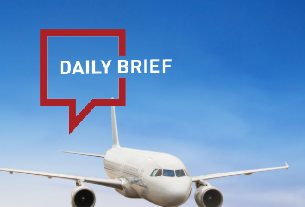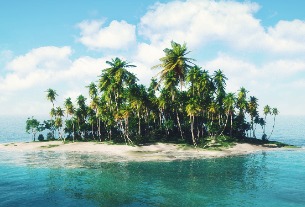A rise in vacation rentals, of which there were 23,000 in the islands in 2018, and the growth of social media saw more tourists visiting Hawaii and increasingly going into its more residential and protected areas. In 2019, 10 million visitors came to Hawaii, which has a population of about 1.5 million. It was the highest number of tourists in a single year the islands had seen in its history.
The phenomenon, known as overtourism, has seen travelers overwhelm not just Hawaii but many of the US national parks and has frustrated residents in cities around Europe, like Venice and Barcelona, and elsewhere.
The Covid-19 pandemic delivered an unusual mixture of pain from economic loss and relief to residents of places that have gotten used to crowds of tourists. In Hawaii, locals hiked popular trails and visited beaches that are usually clogged by tourists. Traffic was noticeably lighter, and things in the islands were generally calmer.
Things are already looking much different in 2021. About 30,000 travelers are now flying into Hawaii each day, over 80% of the number of travelers that were flying in during the same time in 2019. Around the islands, it seems that tourism as it was before the pandemic is coming back.
While that means jobs are back, surveys from the Hawaii Tourism Authority (HTA), the state’s tourism agency, have shown local residents are taking on an increasingly negative opinion of tourism, even in light of the pandemic. In 2020, over half of the respondents to the survey agreed that tourism had brought more problems than benefits.
“There’s an understanding, even within the [tourism] industry … based upon our experience in 2019, that tourism shouldn’t come back the way it was – an unmanaged state,” said Frank Haas, a tourism industry expert based at the University of Hawaii (UH). “That in my mind is pretty clear. The question is, who’s going to pick up the torch and develop a good management plan?”
A balancing act
The parking lot of Hanauma Bay nature preserve, a popular beach and snorkeling spot for visitors on the southern tip of Oahu, is completely empty, save for a few employee cars. The spot would typically be open on this Monday and packed with visitors. But after the pandemic, the Honolulu parks department, which manages the beach, closed the beach for an additional day so the bay gets rest two days each week.
“You can see how clear the waters are right now because it’s a closed day. When you come and it’s an open day, it’ll be very milky, [with sand] stirred up by all the visitors,” said Ku’ulei Rodgers, a researcher with the Hawaii Institute of Marine Biology at UH. This sedimentation can affect the health of coral colonies in the preserve, the larger of which have been dying over the last few years.
Rodgers and other researchers at UH have utilized the pandemic as an opportunity to better study the impact visitors have on Hanauma Bay. Along with clearer waters, the researchers noticed schools of larger fish, like jackfish and milkfish, foraging in the bay and even spotted a few monk seals resting on the beach for the first time in years.
While the bay is a beautiful spot to lounge and snorkel for humans, it is an important refuge for fish. A lack of predators in the bay and low impacts from heavy storm surf and freshwater make the bay a uniquely safe place for fish, of which there have been up to 400 species in the preserve.
While impacts from visitors pale in comparison with the effects of climate change, which has caused devastating bleaching events in the bay’s water, Honolulu’s parks department has for years taken on a series of measures to curtail overcrowding at the preserve.
To enter Hanauma Bay, along with paying a $12 fee, visitors must watch a 10-minute education video on the history and importance of the bay as a nature preserve. In December, when the city reopened Hanauma Bay to visitors, it halved the number of people who could watch the video at once, essentially halving the number of visitors who can visit Hanauma Bay each day to just over 1,000.
The parks department is continuously evaluating the bay’s visitor capacity, teaming up with Rodgers and other researchers to find the balance between access to Hanauma Bay and protection of it.
“[The research] is a big tool for us to determine where that sweet spot is, what’s the right number of people visiting where we can get them in and have them enjoy this beautiful natural treasure but at the same time not having a completely detrimental impact on the nature that’s attracting them,” said Nathan Serota, a spokesperson for the Honolulu department of parks and recreation.
Hanauma Bay’s reservation system has existed for years, but after the massive number of tourists in recent years, the state is starting to implement similar systems at other popular tourist spots to combat overcrowding.
After severe flooding closed Haena state park on Kauai to visitors in 2018, local residents were treated to empty roads and beaches. The state’s department of land and natural resources (DLNR) worked with the local community to develop a reservation system that caps the number of visitors at the park at 900, down from the 3,000 before the flood.
Along with setting up reservation systems, the state is also turning toward increased fees in an attempt to control crowds. The fee to hike Oahu’s famous Diamond Head volcanic cone have doubled for out-of-state visitors, it now costs $90 to park a vehicle carrying over 26 people. And the state legislature is considering a bill that would implement a $20 “green fee” – which places like Palau and Bhutan have implemented – that would go toward a fund to promote the state’s environmental goals.
“We’re more cognizant of the impacts that tourism has,” Serota said. “You’re starting to see that you can’t just have a policy of let’s bring in as many tourists and possible and reap the benefits. Now we have to look at managing it more effectively to see how we can create an experience and not have a negative impact on the local population as well.”
Destination management
But change isn’t going to be easy. In its last five-year strategic plan, released in 2020 before the pandemic, HTA said that destination management – a term that in recent years has been used to describe the solutions to overtourism – has become a major focus of the agency, which has historically been in charge of the state’s tourism marketing. “The continuous drive to increase visitor numbers has taken its toll on our natural environment and people,” the agency said in its plan.
Over the last few months, HTA has released three action plans for destination management on Kauai, Maui and the Big Island. It expects to release Oahu’s plan later this summer.
The influx of visitors seen at the end of 2019 “was enough to start driving our work in a direction to say how do we transition from a destination marketing organization to a destination management organization?” said Kalani Kaanaana, director of Hawaiian cultural affairs and natural resources at HTA.
Kaanaana was one of 14 Native Hawaiian authors who put out a declaration calling for action toward long-term sustainability in the islands, including managing the relationship between residents and visitors. Nearly 3,000 individuals, community groups and businesses, including HTA, have signed on to the declaration.
Destination management will not be an easy task for HTA as the agency faces limited authority to carry out some of its recommendations. Regulation of short-term vacation rentals, for example, which greatly affects the number of tourists, is handled on a county level. And the state’s legislature recently moved to cut HTA funding and strip the agency of some of its responsibilities, with legislators saying the agency should focus on marketing.
Haas, a former vice-president of HTA, said state leaders, who have been enmeshed in the complicated politics of tourism, need to develop a coordinated plan to address tourism for any long-term change to happen.
“At least in the short term, we don’t have a lot of viable options for tourism as an economic driver,” said Haas. “We really need to figure out how to thoughtfully manage and until we do that, it’s just going to be haphazard.”
Read original article




